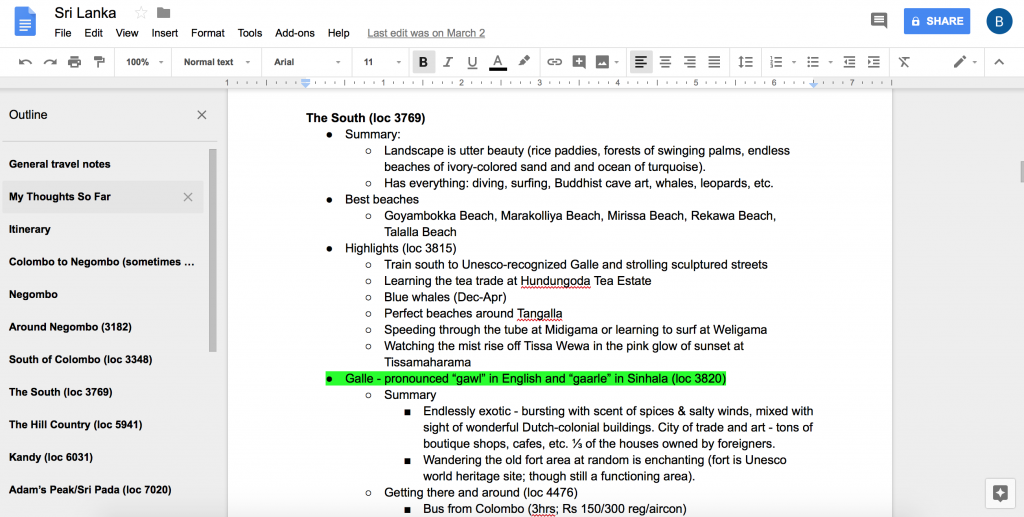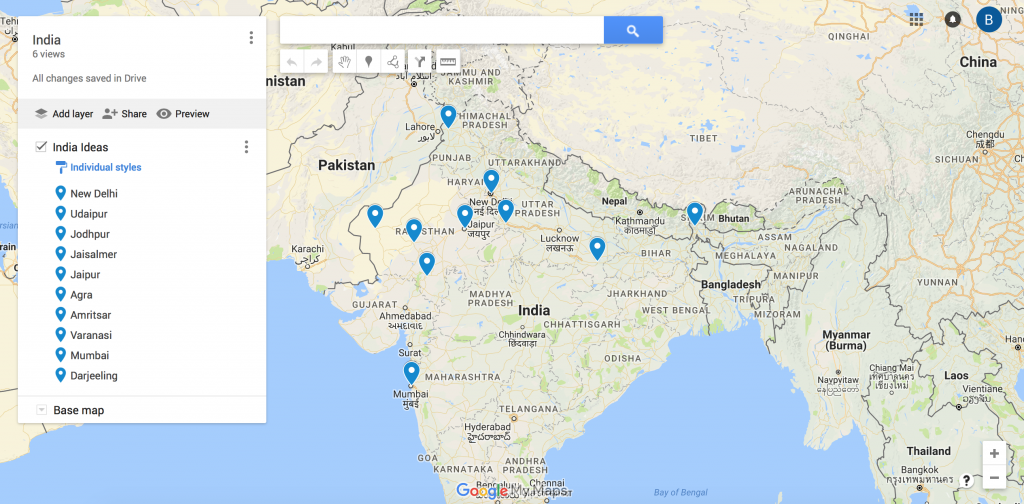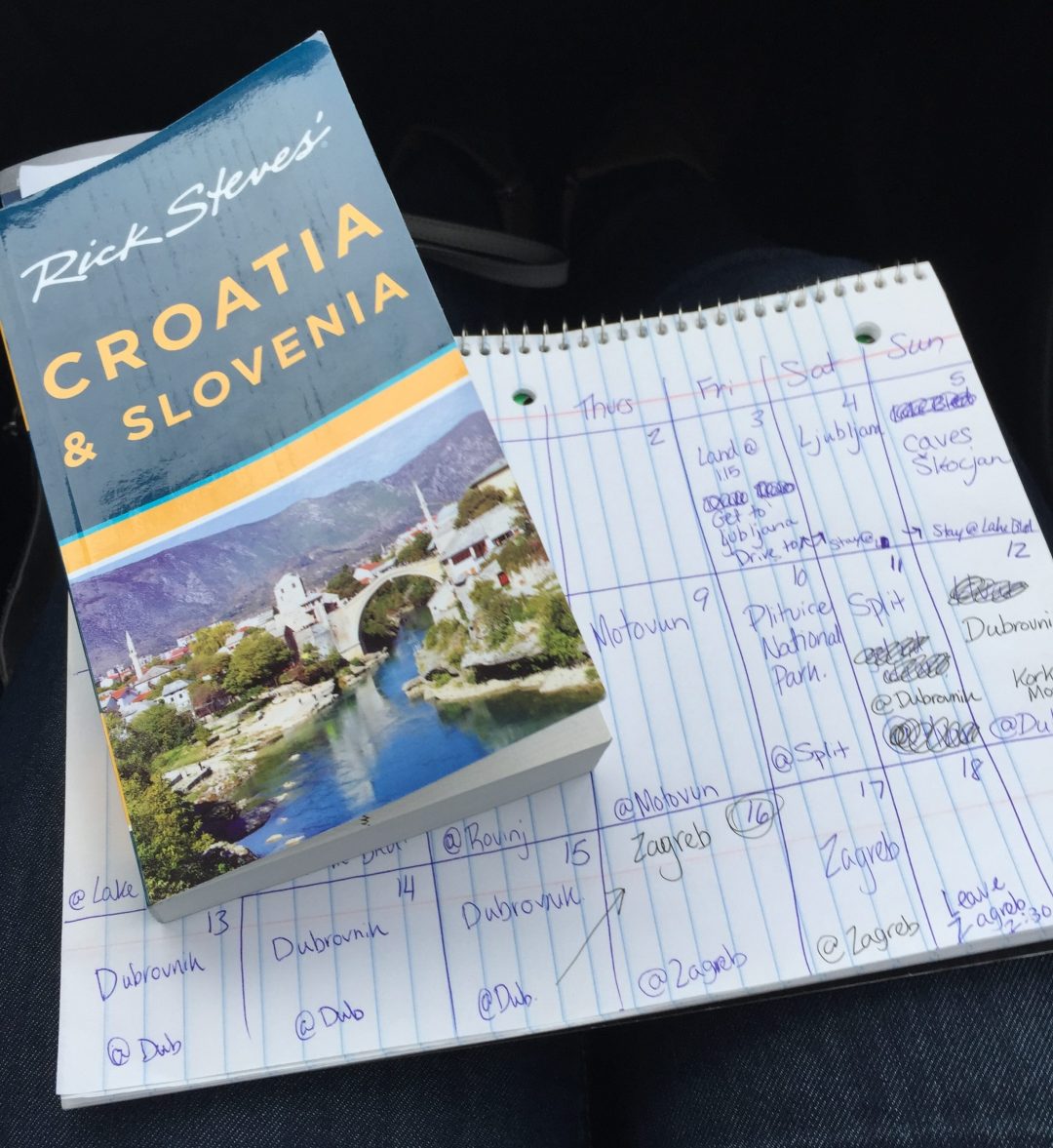Trip planning can be overwhelming, even for those of us who have done it often. But, it can also be really exciting and result in a trip that leaves a lifetime of memories. Since we rarely go on organized tours we’ve had a lot of practice planning trips that are tailor-made for our interests. Here are the steps we follow and some tricks we use to make planning your next trip less stressful.
1.) Choose a Destination (Country, State, Province, Region, etc.)
When choosing your travel destination, make sure to consider the time of year you will be traveling. Weather, holidays, and festivals can make or break your trip. We were planning a trip to Indonesia for 2015, but realized the weeks that worked for us fell during Ramadan, a Muslim holiday, when most places would be closed, transportation would be impacted, and food and drink could be more challenging to come by since the majority of the population is Muslim and would be fasting.
Tip: Also, consider traveling during the shoulder season. Shoulder season is the time of year just before and just after high season; for most of Western Europe, shoulder season is late-April to May and September. Traveling during this time is ideal because the weather remains nice, but the prices for lodging are drastically cheaper.
2.) Create an Idea Document
Once you have chosen the destination(s) of your trip, the planning starts. Make a document with all of the information about the place you’re going; what you want to see, the food you want to eat, activities you want to do, festivals, etc. Don’t limit yourself when making the document, put anything and everything that is of interest. We use Google Docs for this step because we can access it from anywhere and we can both be in the document at the same time entering ideas, but a notebook also works.

Here is a screenshot of our latest idea document for Sri Lanka. You will notice that it is sorted by location, which creates a sort of table of contents on the left which makes for easy navigation of the document.
As for where we get inspiration, it varies: Pinterest, travel blogs, guidebooks, Instagram, Facebook, travel company itineraries, newspaper and magazine articles, friends, etc. For us, there is really no thinking to this portion, just documenting anything that gets us excited.
Tip 1: In order to make the following steps easier, we organize our ideas document by region and cities. We also try and include the link, or source, of the information so we can go back to it in the future.
Tip 2: We also include a section with any important information we come across about the country. Things like the exchange rate, visa requirements, and even cultural norms. For example, in Sri Lanka, you only exchange money or goods with your right hand or both hands. The left hand is considered dirty and so it is disrespectful to give or take from another with only your left hand.
Tip 3: With a library card or an Amazon Unlimited membership you can get the guidebooks for free. Don’t spend $40 if you don’t have to!
3.) Make a Map of Possible Stops
Once you have a list of places you want to go and things you want to see, start plugging them into Google MyMaps. Like all of the other Google Apps, this map will be accessible anywhere there is internet (or even offline) and multiple users can be logged in at the same time. Once you have entered all of the cities, towns, regions, etc. from your idea document into the map, you will usually start to see a pattern. Perhaps there is a loop of places that would make a nice route, or maybe there is a portion of the destination that you can eliminate by just looking at the map. When we made our map for China, we realized that most of the things we wanted to see and do were in the eastern part of the country. If you drew a line down the center of China, we didn’t have many locations west of that line. It’s silly, but this makes a huge country seem less daunting. The map also helps you see what places are near each other and what outliers you have. Oftentimes with outliers, extra transport is required that will take up additional time and money.

Here was the beginning of our map for India. We knew India was going to require several trips since it is such a huge country, so we had already narrowed our focus down to the north. These are the stops we wanted to be sure to visit.
Tip: To make sure that your map doesn’t just become a region with a serious case of chicken pox, make sure to just enter the umbrella stop. For example, if you are going to Paris, you don’t have to list the Eiffel Tower, the Arc de Triomphe, the Champs-Élysées, the Louvre, etc. Since all of those stops are in one place, you can just make a stop in Paris. The only time that you may have to make a special map entry for a landmark is if it isn’t in a city, Stonehenge would be a good example of this.
4.) Rank Must-Dos
While you probably want to see and do everything on your trip document, unless you have an unlimited budget and unlimited time, it isn’t realistic. Sit down with your travel partner(s) and decide together what are your must-see and do, your would be nice to see and do, and your I’m okay to skip it. This is a hard step, but it makes your trip yours, and it makes the next few steps easier.
Tip: Be realistic about your interests during this step. Ben and I aren’t really museum types, so we oftentimes limit them, knowing we would have more fun doing something else. I also have a love/hate relationship with hiking so I seriously have to evaluate any possible routes we’re considering. If wine is involved, it is probably a shoe-in for us.
5.) Research Transportation, Lodging, and Costs at your Must-Dos
It’s amazing how looking at transport and lodging costs can alter your itinerary. Earlier this week we were planning our upcoming trip to Jordan and after I researched lodging at a few of our must-dos we realized they were way out of our budget, and those must-dos were eliminated from our itinerary. In China, we really wanted to visit the floating “Avatar” mountains at Zhangjiajie National Forest Park, but we quickly crossed it off our list after we realized it was going to require either a flight or several train transfers a bus and a taxi to get there.
Tip: When researching transportation we have several favorite websites: Seat61 for anything train related, Rome2Rio provides a look at multiple transport options and includes time and cost estimates between locations, Skyscanner to get an estimate about how much flights are going to cost even with flexible locations and dates, and Kayak to book flights. For lodging, we use AirBnb and Booking. For planning activities, we use TripAdvisor, Viator, and Google.
6.) Determine Length of Stay in Each Place
Once you have determined which places aren’t going to break your budget or eat up all of your travel time getting too, it’s time to decide how many days you will need in each location still on your list. If you have a lot of things you want to see in a specific place, give yourself more time.
Tip: Guidebooks and blogs are usually pretty good at helping you determine how many days you need in places, or how long a hike will take, etc.
7.) Plug your rough itinerary into a calendar
This is the step where I break out a piece of paper and a pen because it can get messy. You’ve narrowed down your must-dos, you know how many days you will need in each location, and you have your map to help determine your route, so now it’s time to determine your itinerary. I draw boxes with dates, or list the dates down the left side of the paper, and plug in things like flights, overnight trains, day trips, and locations. This step often requires a lot of crossing things out and moving things around, which is why I like using a pen and paper.

We usually find ourselves some beverages for this part. It can be hard figuring out what route to take and how to see as much as possible, but it’s also so exciting to see all of your work turn into an actual itinerary. (Don’t mind my spelling errors.)
Tip: It’s a good idea to look at a route backward. For example, if you’re flying into and out of Rome, leave the exploration of the city for the end of the trip so you aren’t scrambling to get back when it’s time to fly out. Also, be sure to consider days of the week, holidays, and festivals while you’re planning your itinerary. The Taj Mahal is closed on Friday’s so make sure you aren’t in Agra for one day only, on a Friday.
8.) Finalize Itinerary and Make Bookings
Once you’ve mapped out your final itinerary, it is time to book your hotels, transport, and activities. You’ve already researched the cost of these things, so there shouldn’t be any surprises.
Tip: If you don’t want to book everything ahead, and instead want to have the flexibility to stay in places you like longer, or leave those that you don’t, that works too. You can use the itinerary as your guide and go from there.
Other Things to Consider:
- None of these steps are set in stone. If you find an amazing location you want to add to your list after you have already researched transport, that’s okay. Add it to your list and see if it will work to add to your itinerary.
- You can make documents for all of your bucket-list destinations even if you aren’t planning a trip to them in the immediate future. We have GoogleDocs going for dozens of locations and we plug in articles or itinerary ideas as we see them. I read a New York Times article about Taiwan in 2013 and finally put it to use last year when we had a free week between Laos and Japan and we needed a place to go.
- Not everyone likes to have their entire itinerary planned out. That is totally fine. Most places in the world you can get a train or bus easily on the day you want, however, if you want to go to a well-known site like Alcatraz, or if you are traveling during a holiday like Holi, make sure you pre-book those tickets and places to stay. It is a huge bummer if you travel somewhere and miss out on something that is a must-do because tickets are sold out, or you can’t find lodging.
- Ben and I travel very differently, but after nearly two years on the road together, we have figured out a way that works for us. While Ben is more of a Type A planner, I am a bit more relaxed. So, we usually have one thing planned for each day, while the rest of the day is free for us to do and see whatever we feel like. It allows for both a plan and the ability to wander the streets and stop into places that are unique.
- Give yourself a little more time than you think, just in case you get sick, want to sleep in, transport is delayed, etc. It’s supposed to be a vacation after all!
Do you have any tips to add to our list? We’d love to hear them, post them in the comments below.




Goose
April 7, 2018 at 9:14 amWhen traveling by car, a great play list on your mobile device – bring Sarah along!
thelawsoftravel@gmail.com
April 10, 2018 at 1:21 amAwe thanks, Kate. A great playlist is always important!